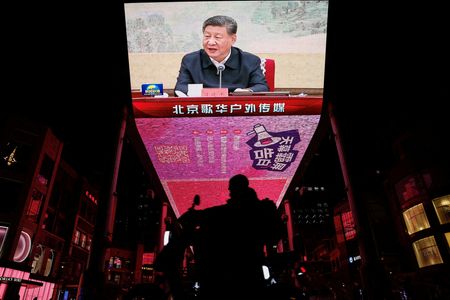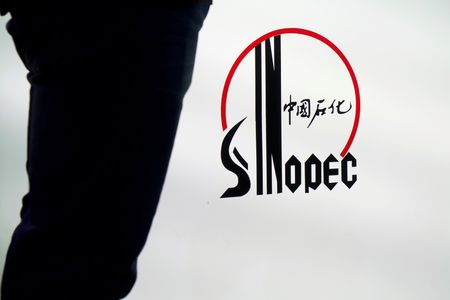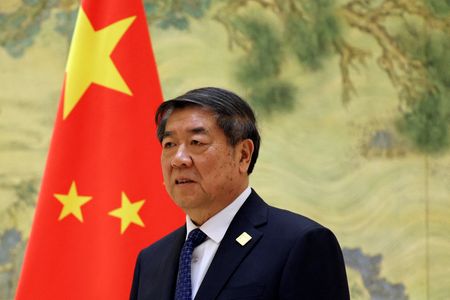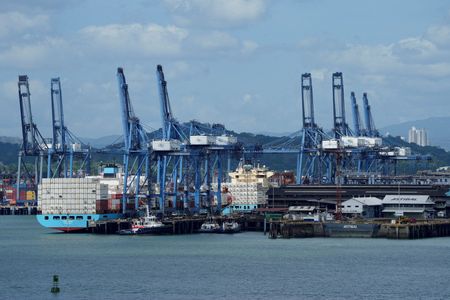By Leika Kihara
(Reuters) – The Bank of Japan is expected to keep interest rates steady on Thursday and warn of heightening risks to the fragile economy that could keep policy in a holding pattern, as U.S. tariffs continue to hit confidence.
The debate may be swayed by what BOJ Governor Kazuo Ueda heard in Washington last week, where the International Monetary Fund slashed its global growth forecasts and policymakers fret of further damage to their economies from U.S. trade policy.
Speaking after a meeting with counterparts from G20 major economies, Ueda said the BOJ will continue to raise interest rates – on condition the economy sustains a moderate recovery and keeps underlying inflation on track to hit its 2% target.
While the BOJ is set to downgrade its growth forecasts, it is expected to signal that risks from higher U.S. tariffs won’t derail wages and price hikes seen as crucial for further rate increases, sources have told Reuters.
But the path towards policy normalisation may take longer than previously expected as trade tensions prod big exporters, which had spear-headed pay increases up till this year, to consider slowing or interrupting hikes next year.
“The balance of risks is on the downside for growth and for inflation,” as the tariff-induced uncertainty could discourage firms from sustaining bumper pay hikes in next year’s wage talks, a senior IMF official said, projecting the BOJ to push back the timing of further rate hikes.
At the two-day meeting ending on Thursday, the BOJ is widely expected to keep short-term interest rates steady at 0.5%. It is also seen pushing back the timing for durably hitting its 2% inflation target in a quarterly report, from around the latter half of fiscal 2025 in current projections made in January.
WEAK-YEN COMPLICATION
Trump’s on-off tariffs have sent shockwaves through financial markets and sent policymakers, including those from Japan, scrambling to negotiate concessions from Washington.
Particularly damaging for Japan is a 25% duty on cars, a mainstay of its export-heavy economy.
“Pre-tariffs, maybe the sun was starting to shine a little more brightly in Tokyo,” said Nathan Sheets, Global Chief Economist at Citi Research, referring to rising real wages that underpinned consumption.
“But when the reciprocal tariffs were put on, and the auto tariffs, which obviously are big too, we said no rate hikes this year,” he said on Citi’s projection of the next BOJ rate rise.
Analysts polled by Reuters in April said they expected the BOJ would hold rates steady through June, with a 25-basis-point hike expected next quarter by a slight majority of respondents.
Despite heightening overseas risks, the BOJ has reason not to sound too dovish on the policy outlook. Domestic inflationary pressure is building with rising food prices pushing core inflation in Japan’s capital – a leading indicator of nationwide trends – to a two-year high in April.
The BOJ may also feel compelled to keep alive market expectations of further rate hikes to prevent renewed yen falls that could draw heat from the U.S., some analysts say.
Trump has accused Tokyo of intentionally weakening the yen to give exports a trade advantage. Although broad-based dollar falls have recently propped up the yen, the slow pace of BOJ rate hikes has kept pressure on the Japanese currency.
While Japan may have averted explicit U.S. pressure for a stronger yen in bilateral finance talks last week, U.S. Treasury Secretary Scott Bessent has made clear his interest in the yen.
“I was pleased to follow up on previous reciprocal trade discussions between the United States and Japan, as well as to discuss matters pertaining to exchange rates,” Bessent said in a post on X after his meeting with his Japanese counterpart in Washington on Thursday.
(Reporting by Leika Kihara; Editing by Sam Holmes)









